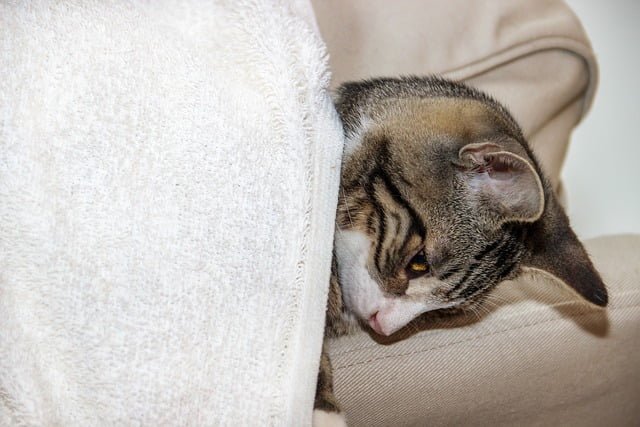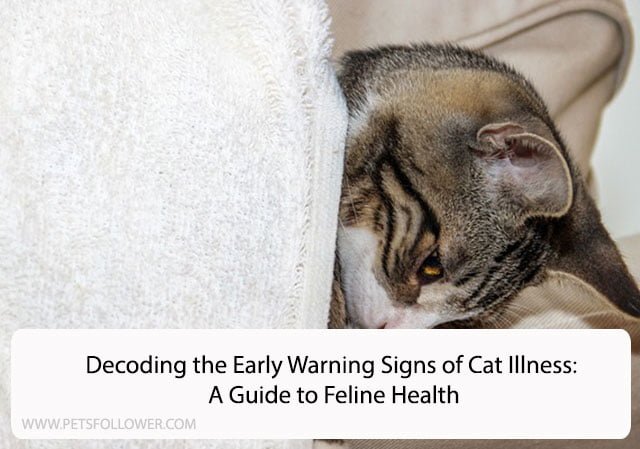
Cats are mysterious creatures, often adept at hiding any signs of illness. As a responsible cat owner, it’s crucial to be vigilant and decode the subtle signals that your feline friend might be unwell. Early detection of cat illnesses can make a significant difference in the outcome of their health.
Additionally, it’s wise to consider consulting with your veterinarian and checking with your pet insurance provider to ensure comprehensive coverage for your cat’s healthcare needs. In this comprehensive guide, we will explore the nuanced signs that may indicate your cat isn’t feeling its best.
1. Behavioral Changes:
Cats are creatures of habit. Any sudden deviation from their regular behavior could be a red flag. If your typically playful cat becomes lethargic or withdraws from social interactions, it might be a sign of underlying health issues. Pay attention to changes in eating habits, sleeping patterns, and overall activity levels.
2. Altered Eating Habits:
Keep a close eye on your cat’s appetite. A sudden loss of interest in food or, conversely, excessive eating can be indicative of health problems. Changes in taste preferences, reluctance to eat, or persistent vomiting after meals warrant a prompt visit to the veterinarian.
3. Respiratory Distress:
Cats are masters at masking respiratory distress, but subtle signs such as wheezing, coughing, or labored breathing should not be ignored. These symptoms may indicate respiratory infections or other respiratory issues that demand swift attention.
4. Changes in Litter Box Behavior:
A cat’s litter box habits provide valuable insights into its health. Straining to urinate, changes in stool consistency, or blood in the litter are signs that merit immediate attention. Such changes could indicate urinary tract infections, gastrointestinal problems, or even more severe issues.
5. Unexplained Weight Loss or Gain:
Sudden fluctuations in your cat’s weight may be symptomatic of various health concerns, including metabolic disorders, thyroid issues, or digestive problems. Regular monitoring of your cat’s weight, coupled with adjustments in their diet as needed, can help prevent and address these concerns.
6. Skin and Coat Changes:
A cat’s skin and coat reflect its overall health. Dull fur, bald patches, or excessive shedding may point to nutritional deficiencies, allergies, or skin infections. Regular grooming and observation can aid in the early detection of such issues.
7. Foul Odors:
If your cat smells bad, it could mean they have problems with their teeth, stomach, or ears. Bad breath, in particular, might be a sign of issues with their teeth that need a vet’s help. Checking for these smells can help you catch any problems early and make sure your cat stays healthy and comfortable. If you notice anything unusual, it’s a good idea to take your cat to the vet for a check-up.
8. Changes in Vocalization:
Cats talk to us in different ways, like meowing or making other sounds. If your cat starts meowing more or less than usual, or if they make strange sounds, it could mean they’re not feeling well or are in pain. Listening to these sounds can help you understand how your cat is doing. It’s like they’re talking to you, so paying attention to their vocal signals can give you important information about their health and wellness.
9. Eye and Nose Discharge:
If your cat has watery or discolored stuff coming out of their eyes or nose, it could mean they have a problem with their breathing or other health issues. It might be because of an infection or allergies. You should regularly look at your cat’s eyes and nose to see if there’s anything weird coming out or if they seem irritated. This can help you catch any health problems early and make sure your cat stays healthy and happy.
10. Grooming Habits:
Changes in grooming behavior can serve as a crucial indicator of potential pain or discomfort in your cat. Should you observe deviations such as your feline companion neglecting its usual grooming routine or, conversely, engaging in excessive grooming of specific areas, it becomes imperative to delve deeper into the underlying causes. Various factors, ranging from skin irritations and the presence of parasites to psychological stress, may contribute to these alterations in grooming patterns. Therefore, a thorough investigation is necessary to identify the root cause and ensure the well-being of your beloved pet. Regular monitoring and prompt attention to any changes in grooming behavior can be instrumental in maintaining your cat’s overall well-being.
To sum it up, keeping your cat healthy is super important. Cats can be sneaky about showing when they’re not feeling well, so it’s crucial to notice any changes in their behavior, eating, breathing, litter box habits, weight, fur, smells, sounds they make, and any eye or nose issues.
Regularly keeping an eye out for any weird stuff and going to the vet if you spot anything unusual is key. This helps catch problems early and keeps your cat happy and healthy. So, paying attention to your cat’s habits and getting them checked by the vet regularly is the best way to make sure your furry friend stays well and content.





